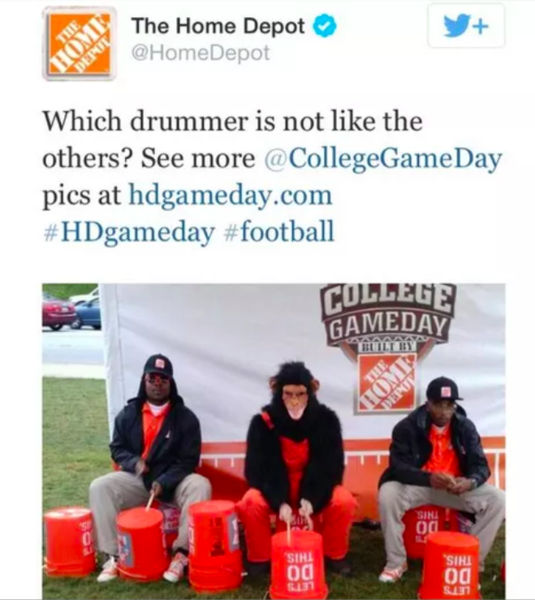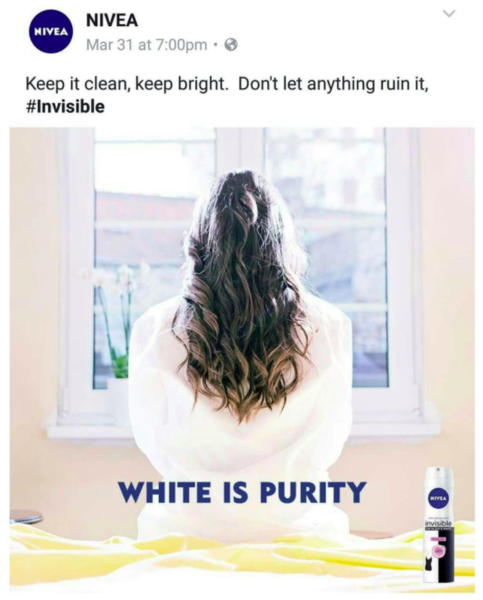 As a retailer, you know that your most important asset is your customer base. You don’t have a business if you don’t have customers, and one of the best ways to thrive is to encourage customer loyalty — essentially, to cater to your existing customer base.
As a retailer, you know that your most important asset is your customer base. You don’t have a business if you don’t have customers, and one of the best ways to thrive is to encourage customer loyalty — essentially, to cater to your existing customer base.
You’re 14 times more likely to sell to an existing happy customer than you are to a new customer, and businesses that grow their customer retention rate by as little as 5% see an increase in profits from 25% to 95%, according to Kissmetrics.
Unfortunately, companies make some common mistakes that kill customer loyalty. Euclid Analytics’ Evolution of Retail 2017, What Kills Customer Loyalty Survey report polled more than 1,500 U.S. consumers, and found that these five actions will drive away a significant percentage your customers. While some of these may sound obvious, the consumer responses can shed some light on how to avoid many of these faux pas and encourage customers to remain engaged and loyal.
Racism and Discrimination
No, it’s not exactly a shocker that racism and discrimination are a huge turnoff to customers. Drawing the largest response, 58% of consumers said they would boycott brands that appeared racist.
Racism can be demonstrated through products as well as customer experiences. For example, Swedish clothing retailer H&M found itself in the midst of controversy recently when a hoodie that said “coolest monkey in the jungle” was modeled by an African-American child. The outdated slur, whether intentional or not, drew protest from customers, and riots even broke out in stores in South Africa. The product was pulled from the company’s website and H&M issued an apology.
In addition, some retailers have been accused of discriminating against African Americans or other minorities. For example, a man’s Facebook post went viral after he shared an experience he had in a Des Moines, Iowa, Old Navy store where he felt racially profiled after being stopped by employees and accused of attempting to steal a jacket. The store issued a formal apology and fired the three employees who were involved, according to the Des Moines Register.
There’s also the recent incident involving two African-American men who were arrested at a Philadelphia Starbucks while waiting for someone to join them. The store employee who contacted the police is no longer with the company and Starbucks is closing 8,000 of its U.S. stores for an afternoon in May for conduct racial bias training as a result of this high-profile story.
In these cases and dozens of others, these incidents did damage to the brand. H&M hired a diversity director as a result, but retailers need to be proactive to prevent these kinds of incidents. Not only is diversity and inclusion good for your bottom line, it’s also simply the right thing to do.
“Diversity and inclusiveness cannot be afterthoughts,” writes Nicola Fumo in Forbes.
There are a few steps retailers can take to curb this issue:
- Create products/services with diversity and inclusion in mind. Learn from H&M’s example and be sensitive when creating and promoting products to the public.
- Hire a diverse and inclusive workforce: That stats are in — a diverse staff is good for your brand for many reasons. So, hire a diverse and inclusive workforce to represent your brand.
- Require staff to take unconscious bias training: This kind of program aims to address ingrained biases that can affect how workers treat colleagues or customers. Rather than just “fixing the bad apples,” most unconscious bias training is meant to help people identify prejudices they may not realize they have and challenge them.
Sexism
Seriously, @Target ??? I’m a female-type person that loves and regularly watches football. Didn’t see these shirts in the men’s section… pic.twitter.com/zOmnfdx2u9
— Becky Tallent (@beckytallent) January 25, 2018
Half of shoppers would boycott a brand that appeared sexist. As with racism, this can be demonstrated through a brand’s actions as well as its products.
Earlier this year, Target came under fire recently for selling women’s T-shirts that said, “Is it halftime yet?” and “Rooting for the commercials,” implying that women are disinterested in football, according to the Daily Dot. A customer shared her distaste for the shirt on Twitter, and Target pulled the line from its stores.
A few years prior, the store had gotten a lot of heat for selling a shirt that said “Trophy,” with some claiming that the shirt perpetuated the rape culture, according to USA Today.
The #MeToo movement uncovered sexual harassment and assault in the workplace starting with film and television, but practices have been going on in virtually all industries. Former Uber CEO Travis Kalanick, for example, was accused of creating a culture of harassment and discrimination, which lead to a #DeleteUber movement and boycott of its services by customers and corporate clients, according to Bloomberg.
Any accusations of sexism need to be investigated and handled immediately. Silence equals complicity, writes William D. Cohan in The New York Times.
As with the steps above to counter racism and discrimination, employers can help curb this kind of behavior with sensitivity, hiring for diversity, and appropriate training for staff.
Insensitive Comments on Social Media
Forty-five percent of customers would boycott a retailer if it posted insensitive comments on social media platforms. This can happen when a store jumps on trending hashtags without understanding the situation.
In 2012, for example, CelebBoutique.com used the #Aurora hashtag to refer to a dress they sold with the same name. The hashtag was meant to reference the Colorado movie theater shooting, and Twitter users felt the store was clueless and insensitive.
“So, note to social media marketers: keeping up with the news of the day is a requisite to your job,” writes Gregory Ferenstein of TechCrunch, which covered the situation.
Ensure you or the staff member handling your social channels are following industry best practices to avoid this, including:
- Keep track of social trends: Whether it’s trending hashtags on Twitter or topics popular on Facebook, stay apprised of what’s happening online. Understanding current events and topical discussions can help curb insensitive comments.
- Make sure all content is reviewed before pulling the trigger: You can use a social media management tool like HootSuite or Sprinklr to write up and review social posts in advance. Review them before posting and try to get multiple people to review them (more perspectives often equates with less offensive content).
-
Avoid tone-deaf campaigns: It isn’t enough to simply avoid making outright offensive remarks. There are plenty of brands that have made boneheaded mistakes with social media content because the campaign or post was simply tone-deaf. Comm100 compiled a few apt examples, including a post from Home Depot and a campaign from NIVEA.


Negative News
Forty percent of customers would avoid shopping with a brand after it received negative news.
“Brands need to be good corporate citizens and refrain from racist or sexist comments or activities. Avoiding this kind of negative press is not only upstanding from a moral and ethical standpoint but also good for the bottom line,” the Euclid report states.
Companies that are in the news for things like data breaches, ties to controversial organizations, or unethical practices, are often boycotted or receive substantial backlash from customers. That inevitably leads to a drop in sales as more consumers voice their concern with their wallets. Belk and Shoes.com, for example, stopped carrying Ivanka Trump’s shoes and handbags after a woman wrote an open letter to retailers that went viral, calling Trump’s defense of her father’s “hate speech” toxic, Business Insider reported.
FURTHER READING: Learn more about public relations with our article on the art of reputation management for retailers.
Political Stances
The final mistake can happen when retailers take a political stance, although just 32% of customers say it would lead them to boycott the store. Seventy-eight percent consumers prefer brands that don’t take a stand on issues, according to the Euclid study, but this sentiment may be changing (depending on the timing, how a brand handles it, and the issue).
For example, Dick’s Sporting Goods recently received a lot of support from customers after it announced it would no longer sell assault-style rifles following the Parkland, Fla. school shooting, according to Fast Company. The bold move prompted several other retailers to take similar action.
“Ultimately, it is up to the brand whether or not a public statement taking a political stance is worth the risk of alienating a portion of its customer base. While its consumers may feel strongly that such statements should be avoided, there is a relatively low risk that a consumer will boycott a brand that comes out in opposition to their personal beliefs,” the Euclid report states.
Maintaining Customer Loyalty: It Pays To Be Mindful
 Keeping customers loyal often means being a good corporate citizen and refraining from controversial comments or activities; just 16% of respondents said they would continue to purchase products from companies no matter what actions it takes.
Keeping customers loyal often means being a good corporate citizen and refraining from controversial comments or activities; just 16% of respondents said they would continue to purchase products from companies no matter what actions it takes.
“We live in a world where brand reputation is more than what you sell,” said Euclid CEO Brent Franson. “It’s what you stand for and how you act. Social media has provided speed and scale for brands’ missteps to go viral but make no mistake: it’s the customers that demand and expect more.
“Our research shows that brands need to act ethically and inclusively to keep customers coming back,” he continued. “At a broader level, companies should think about how to build trust and transparency, so if and when mistakes are made, they have a strong foundation and the right channels in place to mend relationships.”
What other tactics do you use to avoid these kinds of major missteps? How do you keep customer loyalty high? Share your advice in the comments below.

